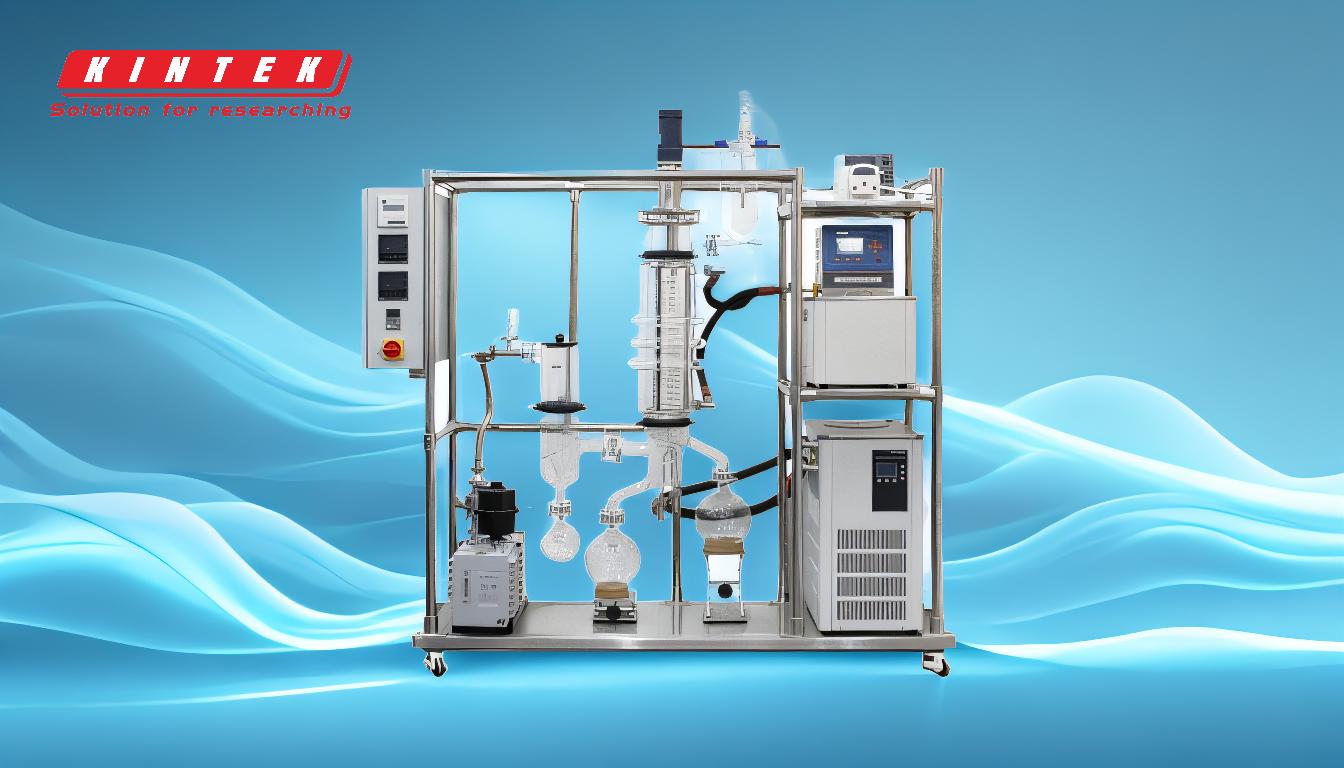Conventional distillation and molecular distillation are both separation techniques, but they differ significantly in their operating principles, conditions, and applications. Conventional distillation relies on boiling point differences and operates at higher temperatures and pressures, making it suitable for separating substances with distinct boiling points. However, it can be problematic for heat-sensitive materials. Molecular distillation, on the other hand, operates under high vacuum and at temperatures below the boiling points of the materials. It separates substances based on the differences in the mean free path of molecules, making it ideal for heat-sensitive, high-boiling-point, or easily oxidizable substances. Molecular distillation offers higher separation efficiency, lower energy consumption, and better product quality compared to conventional distillation.
Key Points Explained:

-
Operating Principle:
- Conventional Distillation: Separates substances based on differences in boiling points. It relies on the equilibrium between the liquid and gas phases, requiring the mixture to reach its boiling point.
- Molecular Distillation: Separates substances based on the differences in the mean free path of molecules. It operates below the boiling point and is a non-equilibrium process, relying on the free evaporation of molecules from the liquid surface.
-
Temperature and Pressure Conditions:
- Conventional Distillation: Operates at higher temperatures (at or above the boiling point of the mixture) and often at atmospheric or low-pressure conditions.
- Molecular Distillation: Operates at much lower temperatures (below the boiling point) and under high vacuum conditions (typically less than 5 Pa). This prevents oxidation, decomposition, or polymerization of heat-sensitive materials.
-
Mechanism of Separation:
- Conventional Distillation: Involves boiling the mixture, creating bubbles, and condensing the vapor. The separation is based on the equilibrium between the liquid and gas phases.
- Molecular Distillation: Relies on the free evaporation of molecules from the liquid surface without boiling. The molecules travel in a straight line (line of sight) due to the high vacuum, and separation occurs based on the distance they travel before condensing on a cold surface.
-
Equipment Design:
- Conventional Distillation: Uses distilling towers or columns, which can be large and complex, requiring significant energy input to maintain boiling conditions.
- Molecular Distillation: Utilizes short-path distillation equipment with a short distance between the evaporator (hot surface) and condenser (cold surface). The design minimizes internal resistance and energy consumption.
-
Applications:
- Conventional Distillation: Suitable for separating substances with distinct boiling points, such as in the petroleum industry or alcohol production.
- Molecular Distillation: Ideal for heat-sensitive, high-boiling-point, or easily oxidizable materials, such as essential oils, vitamins, and pharmaceuticals. It is also used for high-purity separations.
-
Advantages of Molecular Distillation:
- Improved Product Quality: The low-temperature operation preserves the integrity of heat-sensitive materials.
- Higher Separation Efficiency: Achieves a higher degree of separation, even for substances that are difficult to separate using conventional methods.
- Lower Energy Consumption: The unique design and high vacuum reduce energy requirements.
- Reduced Maintenance: The system is more reliable and requires less maintenance compared to conventional distillation.
-
Limitations:
- Conventional Distillation: Limited by the need for boiling, which can degrade heat-sensitive materials. It is also less efficient for separating substances with similar boiling points.
- Molecular Distillation: Higher initial equipment costs, but the long-term benefits, such as reduced labor and energy costs, make it cost-effective.
In summary, molecular distillation offers a more advanced and efficient method for separating heat-sensitive or high-boiling-point materials compared to conventional distillation. Its ability to operate under high vacuum and low temperatures makes it a preferred choice in industries requiring high-purity and high-quality products.
Summary Table:
| Aspect | Conventional Distillation | Molecular Distillation |
|---|---|---|
| Operating Principle | Separates based on boiling point differences; relies on liquid-gas equilibrium. | Separates based on mean free path of molecules; operates below boiling point. |
| Temperature & Pressure | High temperatures (at/above boiling point); atmospheric/low pressure. | Low temperatures (below boiling point); high vacuum (<5 Pa). |
| Mechanism | Boiling mixture, creating bubbles, and condensing vapor. | Free evaporation from liquid surface; molecules travel in a straight line to condense. |
| Equipment Design | Large distilling towers/columns; high energy input. | Short-path distillation; minimal internal resistance and energy consumption. |
| Applications | Suitable for substances with distinct boiling points (e.g., petroleum, alcohol). | Ideal for heat-sensitive, high-boiling-point, or oxidizable materials (e.g., oils, vitamins). |
| Advantages | Broad applicability; well-established method. | Higher separation efficiency, lower energy use, better product quality, reduced maintenance. |
| Limitations | Degrades heat-sensitive materials; less efficient for similar boiling points. | Higher initial equipment costs; cost-effective long-term. |
Need help choosing the right distillation method for your application? Contact our experts today for personalized advice!









